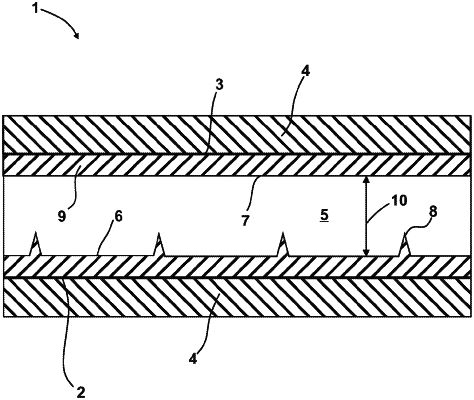| CPC F25B 21/00 (2013.01) [F25B 2321/00 (2013.01)] | 22 Claims |

|
1. An apparatus for establishing a temperature gradient, comprising:
at least one gas-tight working space having a first boundary surface connected to a first electrode and a second boundary surface connected to a second electrode;
wherein when an electric voltage is applied between the first electrode and the second electrode in the working space, an electric field can be produced between the first boundary surface and the second boundaryr surface;
a distance between the first boundary surface and the second boundary surface being less than 5000 nm;
the first boundary surface comprising at least one field-enhancer roughly cone-shaped, at least at an end side, and having a taper angle of less than 30 degrees so that upon application of an electric voltage to the electrodes an essentially homogeneous electric field is prevalent in the working space and a field strength of the electric field in a region of the field-enhancer is greater than an average field strength of the electric field in the working space, and an electric field strength at the field-enhancer is greater than an average electric field strength in the working space by at least a factor of 100.
|